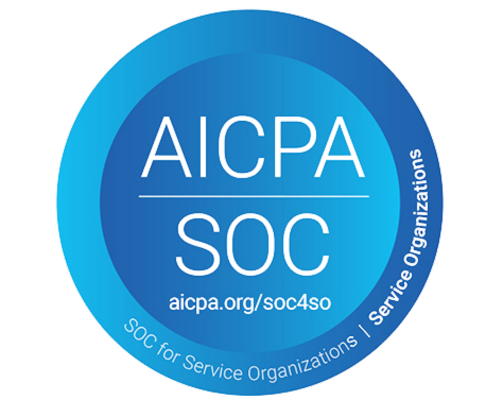Keep on Truckin’ - Without Compliance Breakdowns
The Freight Problem: Turnover in Trucking & Logistics
The U.S. trucking and logistics industry is hitting a speed bump in 2025—and it’s not fuel costs or freight delays. It’s workforce turnover.
According to a report by the Owner-Operator Independent Drivers Association (OOIDA) Foundation, long-haul carriers are reporting annual turnover rates exceeding 90%, with some large fleets experiencing rates over 100%. That means companies are replacing their entire driver workforce every year—and sometimes more than once a year.
But the problem isn’t limited to drivers. Warehouse staff, dispatchers, and logistics coordinators are also cycling out frequently, driven by job dissatisfaction, long hours, and tough working conditions. And with each exit comes another onboarding process—and another Form I-9 to complete.
In a fast-moving, decentralized industry, this creates serious compliance risks. Errors in I-9 completion can lead to audits, fines, and even DOT-related operational disruptions.
What’s Fueling the Turnover Crisis?
The high turnover in trucking isn’t just about long hours or tough conditions—it’s deeply rooted in the economic structure of the industry.
Following deregulation under the Motor Carrier Act of 1980, the trucking industry became highly fragmented. Thousands of new carriers flooded the market, creating fierce price competition and slashing profit margins. As wages stagnated, turnover became a built-in business strategy, not just a side effect.
In 2025, that churn model is still going strong:
- Slow Hiring Processes are typically paid by the mile, which excludes time spent loading, waiting, or doing paperwork, leading to
significant unpaid labor.
- Drivers are
exempt from federal overtime protections, working up to 70 hours a week without overtime pay.
- Many fleets rely on a constant flow of
new, inexperienced drivers, made possible by
subsidized training programs and
non-domiciled CDLs. Roughly
800,000 new CDLs were issued in 2022 alone.
- Indentured training agreements trap new drivers in low-paying jobs, while misleading job marketing fuels unrealistic expectations, driving more churn.
Even technological adoption reflects this reality. Fleets are investing in tools like driver-facing cameras, collision avoidance systems, and automated transmissions—not just for safety, but to compensate for undertrained, transient drivers.
Meanwhile, Owner-Operators, once seen as a path to independence, often fall into predatory lease-purchase programs that strip them of earnings and stability, further contributing to the cycle of dissatisfaction and exits.
The result? In the Over-the-Road (OTR) sector, turnover rates hover between 90% and 100%, compared to the single digits in private fleets and LTL carriers that offer more stable conditions.
Until these systemic distortions are addressed, turnover will remain the industry standard, and so will the
compliance risks that come with constant hiring.
Compliance Pit Stop: I-9 Best Practices for Logistics HR
In an industry where everything depends on timing and precision, I-9 compliance should be no different. Here are five strategies to keep your onboarding process audit-ready and built for speed:
- Complete Form I-9 Without Delay
Drivers must complete Section 1 of Form I-9 by their first day, and employers must finish Section 2 within three business days. Automated reminders and mobile-enabled tools help avoid delays, especially with remote onboarding. - Train Local Terminal Managers
With hiring often handled at regional offices or distribution centers, regular training is essential. Equip field HR staff with clear procedures to ensure consistent compliance across locations. - Conduct Regular Internal Audits
Spot check I-9 records across terminals and warehouses to catch missing forms, expired IDs, or unsigned sections. Internal audits can prevent DOT inspection surprises and ICE penalties. - Use E-Verify When Available
While not mandatory in every state, E-Verify provides an added layer of protection, especially useful when hiring quickly or managing temporary logistics staff. - Go Digital for Document Storage
Paper forms are easy to misplace in fast-paced environments. A digital I-9 system ensures every form is stored securely, centrally, and ready for audit at a moment’s notice.
Keeping Compliance on Cruise Control with
Clear I-9
When your drivers are constantly on the move, your compliance process shouldn’t slow you down. Clear I-9 provides logistics companies the tools to stay compliant, organized, and ready to hire—anywhere, anytime.
Key Benefits of
Clear I-9:
- Automated Workflows: Eliminate manual tracking and reduce errors.
- Mobile-Friendly Interface – Perfect for remote onboarding of drivers and warehouse teams.
- Live Video I-9 Verifications – Ensure compliance for remote or on-the-road hires.
- Secure Digital Storage – Keep all documents audit-ready in a centralized system.
- Real-Time Validation – Catch mistakes early before they become penalties
Avoid Compliance Delays—And Keep the Freight Moving
In logistics, delays cost money, and compliance errors cost even more. Clear I-9 helps you verify every new hire with speed, accuracy, and confidence—so your workforce keeps moving, and your operation stays protected.
Schedule your Clear I-9 demo today and put your compliance on cruise control!






